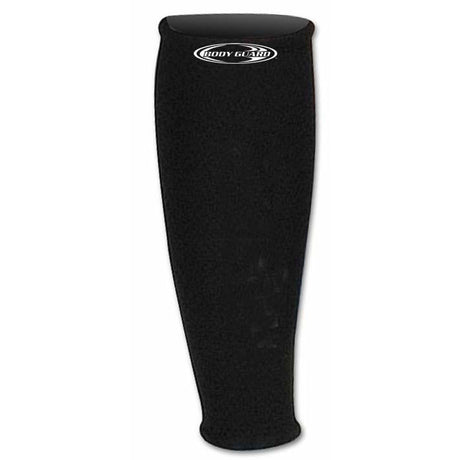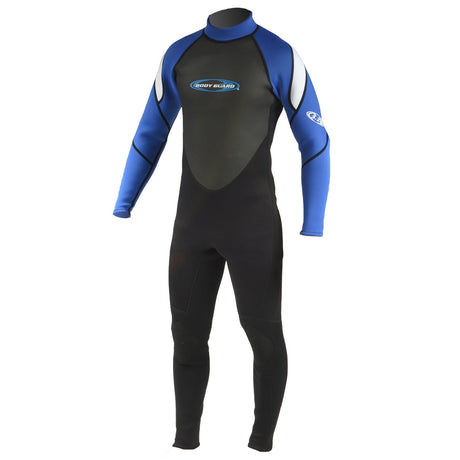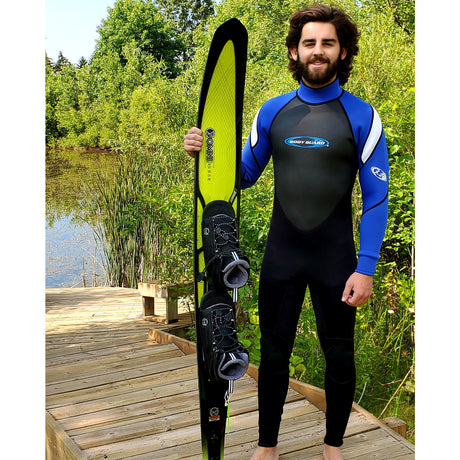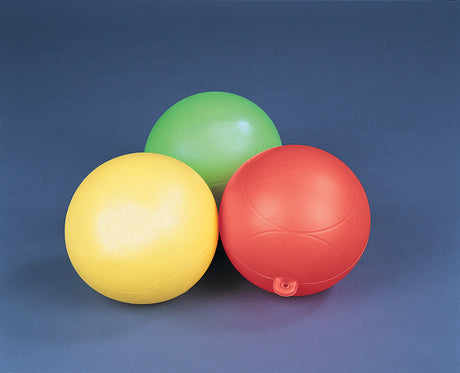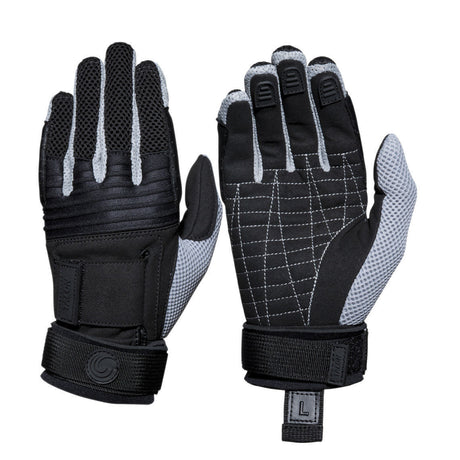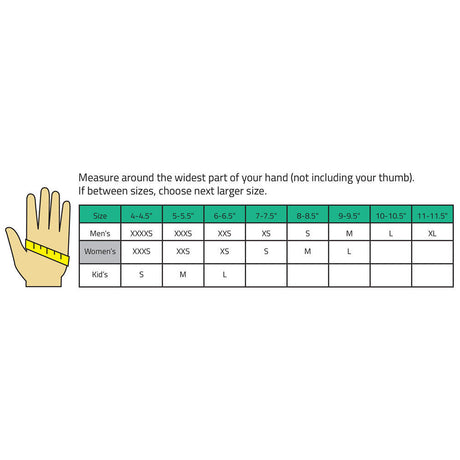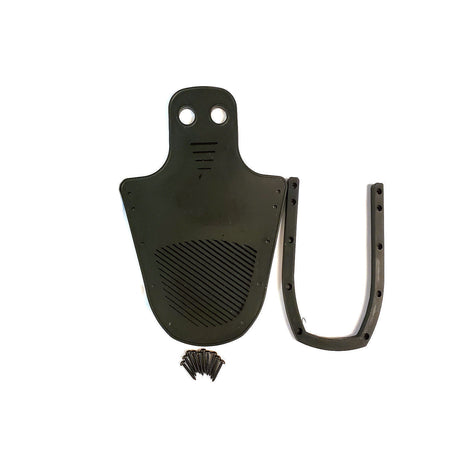What size water skis should you choose?
When it comes to selecting the right water skis, size matters. The size of the skis will depend on your weight, skiing ability, and personal preference.
Generally, longer and wider skis provide more stability and are suitable for beginners or those who prefer a slower pace. On the other hand, shorter skis are more maneuverable and offer better control at higher speeds.
Water Ski Size Chart
Beginners should buy skis that are longer and wider, as they provide better stability. Intermediate and advanced skiers can choose skis that are shorter and narrower for increased maneuverability.
No matter your skill level, the correct length of a ski is determined by the weight of the skier, and the speed of the tow boat.
Use the chart below to find your optimal slalom ski package:
| Rider Weight | 26 to 30 MPH | 30 to 34 MPH | 34+ MPH |
| < 100 lbs. | 61" - 64" | 61" - 64" | 61" - 64" |
| 101 to 120 lbs | 61" - 66" | 61" - 64" | 61" - 64" |
| 121 to 140 lbs | 61" - 66" | 61" - 66" | 63" - 66" |
| 141 to 160 lbs | 64" - 69" | 63" - 69" | 63" - 66" |
| 161 to 180 lbs | 66" - 72" | 66" - 69" | 66" - 69" |
| 181 to 200 lbs | 68" - 75" | 68" - 72" | 66" - 70" |
| 201+ lbs | 70" - 75" | 68" - 75" | 68" - 72" |
Shaped skis have simpler size requirements and are intended for low-speed riding. According to O'Brien Watersports, riders under 175 lbs. should buy shaped skis measuring 61" to 65". Riders heavier than 175 lbs. should stick with shaped skis measuring 65" to 67".
Water ski rockers and their impact on performance
Rockers refer to the curvature of the bottom surface of the skis. They play a crucial role in determining how the skis perform on the water. There are two main types of rockers: continuous and traditional.
Continuous rockers have a smooth, curved shape from tip to tail. They provide a more predictable and forgiving ride, making them ideal for beginners and recreational skiers. On the other hand, traditional rockers have a flat spot in the middle, which allows for better speed and stability. These skis are preferred by more advanced skiers who want to perform tricks and jumps.
Flex: Finding the right balance
The flex of the skis refers to their ability to bend under pressure. It affects how the skis respond to turns and how they perform on different water conditions. Skis with a softer flex are more forgiving and easier to control, making them suitable for beginners and lighter skiers. Skis with a stiffer flex offer better stability and responsiveness, making them ideal for more experienced skiers and those who prefer higher speeds.
It's important to find the right balance of flex that suits your skiing style and ability. If you're unsure, it's recommended to start with skis that have a medium flex, as they provide a good balance between stability and maneuverability.
Choosing the right bindings
Besides the ski itself, bindings are the most important component of water skiing, as they secure your feet to the skis and ensure proper control. When selecting bindings, there are a few factors to consider:
Size: Make sure the bindings are the right size for your feet to ensure a comfortable and secure fit.
Adjustability: Look for bindings that offer adjustability, as this allows you to fine-tune the fit and accommodate different foot sizes.
Support: Consider the level of support the bindings provide. Beginners may prefer bindings with more support, while advanced skiers may opt for bindings that offer greater flexibility.
Compatibility: Ensure that the bindings are compatible with the skis you have chosen. Most skis and bindings are designed to be compatible, but it's always a good idea to double-check.
See a comparison of all the types of ski bindings here.
Some skiers choose to wear a double boot setup, placing a full boot on both the front and rear foot. This provides added stability, but it's less convenient. Others opt for a rear toe plate - a partially open foot that provides more freedom, but less stability.
Which setup is better? That depends. Read our detailed comparison of double boots vs. rear toe plates here.
By considering these factors (sizing, rockers, flex, and bindings) you can start your water skiing journey with more confidence, better performance and, most importantly for beginners, easier starts in the water. Check out our ski packages, grab a pair, and hit the water!



